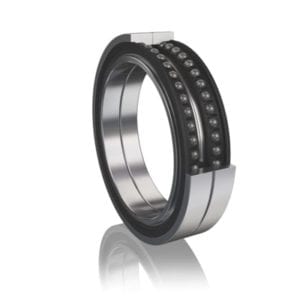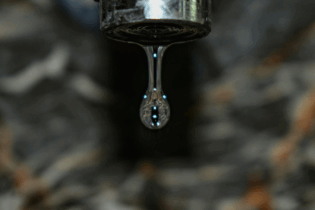In addition to wind and solar power, water power will make a significant contribution to supplying renewable energy in the future. This applies to conventional applications such as hydro-storage plants, pumped-storage plants, and run-of-the-river water power plants as well as new types of marine water power. These include tidal and wave power sources in particular. Schaeffler has been a respected, close development partner and supplier to “conventional” hydropower for many years. Applications in tidal stream and wave power are now also becoming increasingly important. Special bearing solutions are required for turbines, floating bodies, buoys or oscillating hydrofoils, depending on the concept.
Non-hermetic seals and omission of lubricant The ambient conditions in and under water mean that special requirements are placed on the bearing support. For these applications, Schaeffler develops bearing supports that can be directly installed in water. The water is the medium that provides the lubrication. Schaeffler uses a special steel that is resistant to corrosion for the rolling bearing rings. The rolling elements, for example, are made of ceramic. The cages, which guide the rolling elements, are manufactured from special, water resistant plastics. These are in addition to non-hermetic, light seals that allow water to enter the bearing but keep particles away from the rolling contact. Schaeffler is able to use decades of experience in materials technology, surface coating and seal technology for these developments. Schaeffler does not use heavy seals that cause a lot of friction. This means plants can be operated in a much more energy-efficient manner. There is no need to use oil and grease because the rolling bearings are lubricated by water. This means a major benefit in ecological terms when used in water. Reliability and low maintenance requirements play an important role in all solutions since once the plants are installed under the surface of the water, access to them is limited and they must be lifted to the surface using time-consuming operations to enable maintenance work to be carried out. The first prototypes of media lubricated rolling bearings are already in use in pilot projects, for example, in North America. Concepts for tidal stream and wave power plants Axial turbines are installed under water to utilize the energy from currents and tides.In the same way that a stream of air moves the rotor in a wind turbine, in a tidal power plant, the current moves the rotor that generates electricity. An axial turbine is a modification of this principle that uses the Venturi effect. During this process, the water is fed through a tapered pipe. This increases velocity of the water as well as the energy output. Concepts that use radial turbines are similar to those with axial turbines. Oscillating hydrofoils are another principle for using the energy from tidal current. The inclination angle can be adjusted so as to enable the current to produce up and down movement of the hydrofoil, which is similar to a dolphin’s tail fin.
This movement is used to generate electricity. Various concepts are also currently being developed to utilize wave energy. For example, one system uses several floating bodies on the surface of the water that are linked together with joints. The movement of the floating bodies relative to each other is used to generate electricity. A similar principle is used with buoys, where the vertical movement triggered by wave swell is used to generate electricity. The buoys can operate independently and drive a generator under water. Another concept involves placing several buoys very close to each other in a row so that they follow the wave swell on the water’s surface like a centipede. In systems similar to those using horizontally oscillating hydrofoils when using tidal energy, vertically oscillating shutters are also used in wave power technology. These move with the wave swell by means of joints. Floating tanks “catch” the waves via a ramp near the shore. A turbine is driven by the water as it flows back. Oscillating water columns have a chamber with one opening above and one opening below the surface of the water. The waves move the resulting column up and down in the chamber. The varying air pressure between the chamber and the ambient air is used to drive an air turbine. Schaeffler is involved in numerous projects of this type as a development partner. In addition to the expertise of its sales engineers and the Schaeffler Technology Center close to the customer’s location, Schaeffler is in particular able to use the comprehensive application expertise in central sector management and the consolidated know-how of central development areas.








